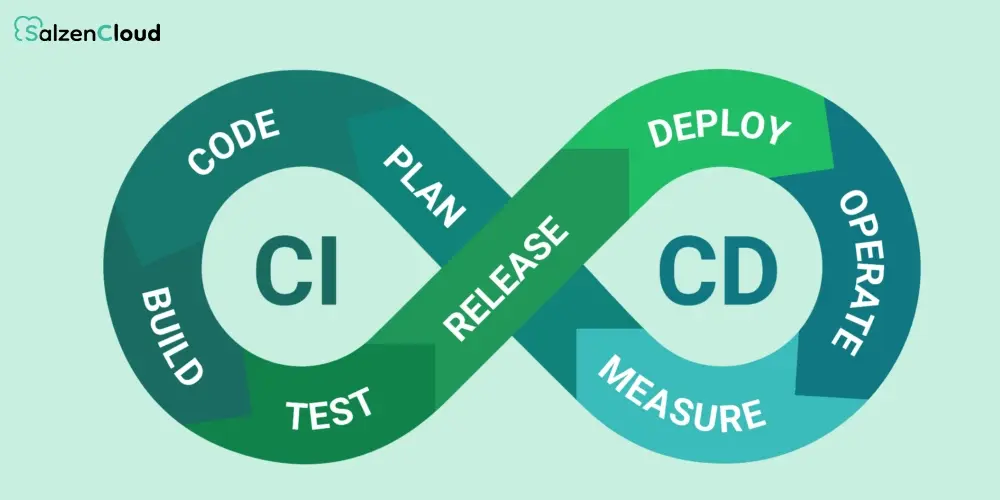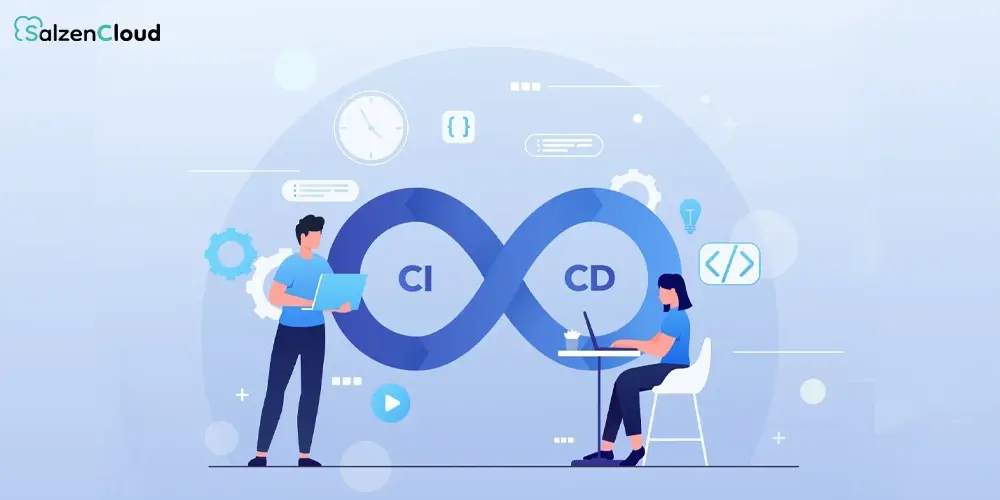What is CI/CD and Why it is Crucial for Continuous Delivery?
January 10, 2025

In an age where the digital environment changes at an astonishing pace, the demand for quicker and more dependable software delivery is critical. Businesses must provide updates, fixes, and features with minimal interruptions to remain competitive. This is where CI/CD becomes essential.
This blog entry thoroughly investigates what exactly is CI/CD, examines the vital CI/CD tools, analyses the fundamental components of a CI/CD pipeline, and emphasises the important role of CI/CD in attaining continuous delivery.
What is CI/CD?
Let us understand the CI/CD meaning first. CI/CD stands for Continuous Integration/Continuous Delivery. These two concepts are vital to contemporary software development. It assists teams in automating and refining processes. But how do they actually operate?
- Continuous Integration
CI is a development methodology. Here, programmers regularly merge code modifications into a common repository. Each integration initiates an automated build and testing sequence. This enables teams to detect defects swiftly.
- Early Bug Identification: Merging code consistently can help teams identify bugs sooner in the development process. This minimises the expenditures and time linked to resolving them.
- Consistent Code Excellence: Automated tests executed with each integration guarantee that only high-calibre code is merged. This promotes a more robust codebase.
- Quicker Feedback Cycles: Developers obtain prompt feedback on their code modifications. This lets them make alterations rapidly.
- Continuous Delivery
CD expands on the concepts of Continuous Integration. It guarantees that code modifications are automatically readied for a release to production. This enables the rapid and efficient deployment of new features.
- Automated Release: The deployment procedure is automated. This enables teams to release features to production at any given time with minimal manual effort.
- Consistently Deployable Code: By guaranteeing that the codebase is perpetually in a deployable condition, organisations can react swiftly to market needs. They can also quickly adapt to user input.
- Minimised Deployment Risk: Smaller, incremental launches diminish the risk tied to deploying new code. This simplifies the management of changes and allows for rollback if required.
CI/CD Tools and How They Enable the Process?

The effective execution of CI/CD is significantly influenced by the selection of appropriate CI/CD tools. These instruments enable the automation of various phases within the software delivery workflow, which is a crucial part of a well-structured CI/CD architecture. This allows teams to concentrate on coding instead of engaging in manual activities. Here is a detailed examination of some commonly utilised CI/CD tools:
- Jenkins: Jenkins is a free automation tool. It helps build, deploy, and manage software development tasks. Jenkins also has many plugins that add extra features. This makes it more powerful.
- GitLab CI/CD: GitLab makes automation of the software development process straightforward. It includes tools for CI/CD pipelines and works with multiple programming languages.
- CircleCI: CircleCI is a cloud-powered tool. It automates the software development process. It works with different environments and connects easily to tools like GitHub and Bitbucket.
- AWS CodePipeline: AWS CodePipeline is a fully managed CD service from Amazon Web Services. Here, your application's build, test, as well as, release steps are seamlessly automated. This makes it an essential part of AWS CI/CD solutions.
- Azure DevOps: Azure DevOps is a set of Microsoft tools that includes Azure Pipelines for CI/CD. It supports different programming languages and easily connects with Azure services.
- GitHub Actions: GitHub Actions is a tool for automating tasks in your repositories. It is easy to set up and smoothly supports CI/CD processes.
The CI/CD Pipeline
The CI/CD pipeline is the core of this methodology. It comprises a sequence of automated procedures that facilitate the integration and distribution of code from the development phase to production. An effectively organised CI/CD pipeline can greatly boost development efficiency. It encompasses the following phases:
- Code Commit: Developers commit their code to a shared repository.
- Build: The code is compiled and built automatically by CI/CD tools.
- Test: Automated testing is run to catch bugs and errors early in the process.
- Deploy: After passing all tests, the code is automatically deployed to staging or production environments.
- Monitor: Continuous monitoring ensures the code works as expected in production.
The Importance of CI/CD in Continuous Delivery
- Faster Time to Market
The capability to reduce the time to market is one fine benefit of CI/CD. Automating the build, testing, and deployment processes can help teams consistently deliver updates and features. This eliminates setbacks caused by manual interventions. It lets organisations respond more swiftly to market demands, address bugs quickly, and implement new features with greater efficiency.
- Reduced Risk
Manual deployments are susceptible to mistakes, and with each release comes the potential of introducing new bugs. However, with CI/CD, the risk is reduced thanks to automated testing, uniform environments, and regular deployments. The smaller the modifications, the lower the likelihood of introducing problems.
- Improved Code Quality
With CI/CD implemented, every modification made to the codebase is automatically evaluated. This ensures that bugs are detected early rather than after deployment. This ongoing feedback loop enhances code quality over time, leading to superior software.
- Increased Developer Productivity
With automated builds, testing, and deployments, developers can concentrate on writing code and developing new features instead of being preoccupied with manually integrating their changes or handling deployment problems. This results in more content and productive teams.
Closing Thoughts
CI/CD is not merely a trend in contemporary software development. Instead, it is a methodology that profoundly influences continuous delivery. It enables organisations to swiftly develop, test, and launch code with minimal risk, enhanced quality, and improved scalability. The incorporation of CI/CD tools and the creation of a robust CI/CD architecture facilitate quicker and more efficient delivery pipelines. This ultimately provides a greater competitive advantage in the marketplace.
Incorporating CI/CD into your development process can empower your team to concentrate on innovation while the automation manages the routine tasks. Whether you are utilising AWS CI/CD or investigating other CI/CD solutions, this approach is crucial for organisations striving to remain competitive. Embrace CI/CD, and observe how your software delivery process accelerates, diminishes errors, and enhances customer satisfaction.
For expert insights on CI/CD pipeline, tools, and cloud computing, let the Salzen website be your guide.
recent blogs


Top 10 Benefits of Cloud Computing for Driving Modern Business Success
Read More
